#history of workers
Explore tagged Tumblr posts
Text
The non-resplendid Outfit: What poor women wore in the mid to late 1800s, Victorian era

Housemaids, early 1860’s. They are dressed in their best for the photographer, but look at their hands. From Victorian Working Women. They could perhaps have scullury maids, who were a lower ranked of housemaid.

Fig. 1 - Washerwoman and young girl • Mid-1800's
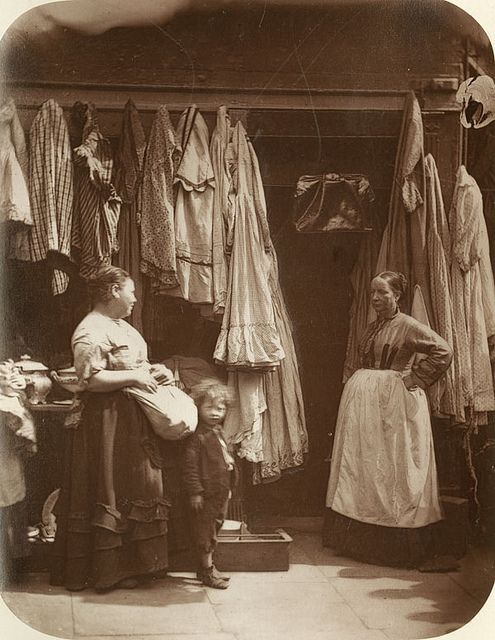
Fig. 2 - From 'Street Life in London', 1877, by John Thomson and Adolphe Smith. "The accompanying photograph represents a second-hand clothes shop in a narrow thoroughfare of St. Giles."
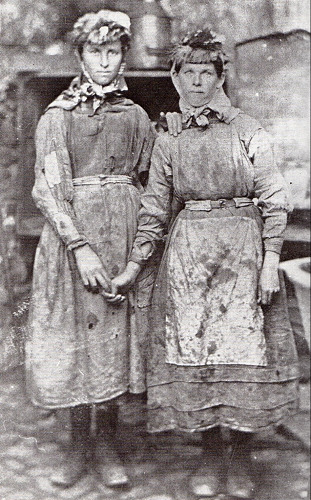
Fig. 3 - These women were referred to as "tip girls". Their job was to unload mine refuse from train cars and on to the "tip" of the mountains of mine waste. Tredegar, Wales, 1865. Photo by W. Clayton from Victorian Working Women
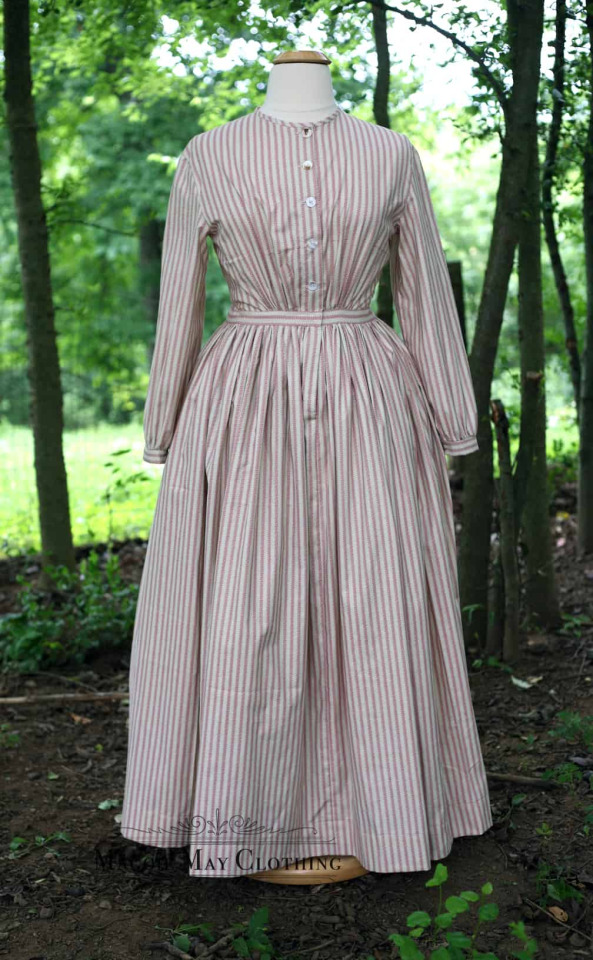
fig. 4 - This dress features a loose fitting, unlined bodice gathered gently under the bust and at the center back. The sleeves are cut moderately to encourage movement and feature a short cuff with button closure. The semi full skirt is gathered into a waistband and attached to the bodice. The skirt is hemmed to the ankle with a single turn hem. The gown closes at the center front with buttons. Shown over over a quilted petticoat and extra full petticoats. Typically worn between 1840 and 1890. This dress is a replica based on research.
Working class women in the Victorian era couldn't afford the latest fashions. They wore simple, practical clothing in a style dependent on their ooccupation. In figure 1, The woman is wearing a simple dress and cape. Her clothing looks clean because she's a washerwoman; her clothing only exposed to water and soap. Her dress is very similar to the one in figure 4.
In figure 2, the women working in the second-hand clothes shop are also performing work that isn't likely to soil their clothing. It's interesting to discover there were such shops. I always assumed poor women of this era made their own clothing.
A job such as handling coal (figure 3) was such dirty work that the clothing worn for it had to be made from thick, rough fabrics and cut loose to facilitate movement. The dirtier and more physically demanding the work, the rougher the clothing.
#fashion history#victorian era#working women#victorian work clothes#1800s women's work#victorian work dress#the resplendent outfit#victorian history#historic photographs#historic clothing#history of workers#women's history
82 notes
·
View notes
Text
Will you love me to unveil my magic wand on you?
Reblog trans lovers💦🍆 if you want me to unveil it on you🔞

#transgender#trans artist#transzodiac#trans dating#trans pride#trans zelda#transx community#trans vtuber#trans beauty#transbian#trans bottom#trans boy#trans names#trans nsft#transsexual#trans sex worker#trans stuff#trans selfie#trans dick#transgurl#transgirl#trans goddess#trans history#trans headcanon#transharmed#transhumanism#trans journey#transjapanese#trans jokes#trans kids
3K notes
·
View notes
Text

What do you see? 👀🙈🏳️⚧️
Text me on Telegram lovelies🥰 @Snoww67
#trans beauty#trans nsft#trans pride#trans woman#transfem#transgender#transgirl#transisbeautiful#transmasc#trans cock#trans life#trans community#trans support#trans gender#trans girl#trans gurl#trans goth#trans goddess#trans lives matter#trans sex worker#trans history#trans lady#trans content
3K notes
·
View notes
Text
Mary Fields (c. 1832 – December 5, 1914), also known as Stagecoach Mary and Black Mary, was an American mail carrier who was the first Black woman to be employed as a star route postwoman in the United States. Fields had the star route contract for the delivery of U.S. mail from Cascade, Montana, to Saint Peter's Mission. She drove the route for two four-year contracts, from 1895 to 1899 and from 1899 to 1903. Author Miantae Metcalf McConnell provided documentation discovered during her research about Mary Fields to the United States Postal Service Archives Historian in 2006. This enabled the USPS to establish Mary Fields' contribution as the first African-American female star route mail carrier in the United States
#black tumblr#black literature#black history#black community#black excellence#civil rights#black history is american history#black girl magic#blackexcellence365#postal worker#strong
526 notes
·
View notes
Text
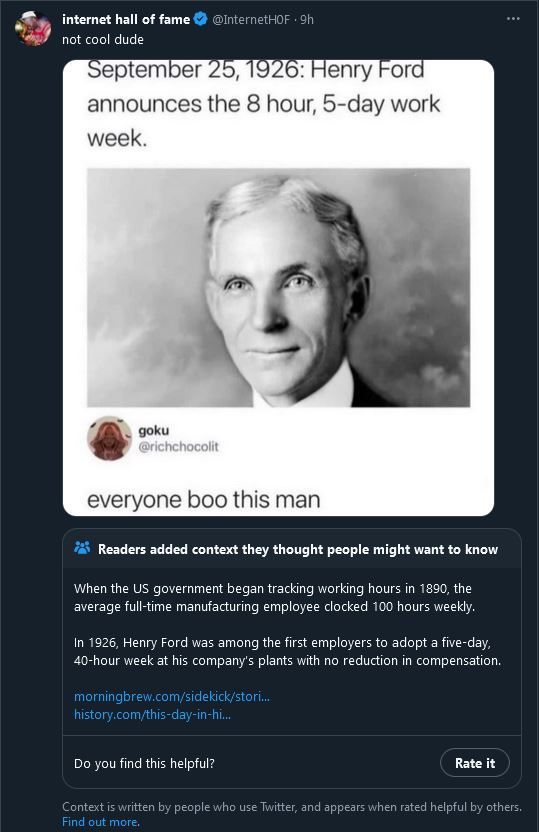
4K notes
·
View notes
Text
tumblr: your boss is not your friend! they shouldn't be making you do emotional labor! work-life balance! do only what they pay you for and then check out! [to be clear, I agree with this sentiment]
also tumblr: omg why is this literary protagonist saying she's LONELY when there are SERVANTS ALL AROUND HER?! what a SNOB she is to not BEFRIEND THEM AND TELL THEM ALL HER TROUBLES!!!
#tell me you're not seeing it from the workers' perspective without telling me...#history#historical fiction#domestic work#domestic workers
2K notes
·
View notes
Text
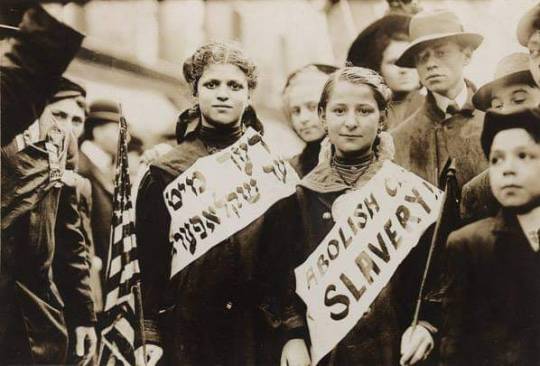
On November 23, 1909, more than twenty thousand Jewish Yiddish-speaking immigrants, mostly young women in their teens and early twenties, launched an eleven-week general strike in New York’s shirtwaist industry. Dubbed the Uprising of the 20,000, it was the largest strike by women to date in American history. The young strikers’ courage, tenacity, and solidarity forced the predominantly male leadership in the “needle trades” and the American Federation of Labor to revise their entrenched prejudices against organizing women. The strikers won only a portion of their demands, but the uprising sparked five years of revolt that transformed the garment industry into one of the best-organized trades in the United States.
#jumblr#jewish#jews#judaism#nesyapost#jewish history#jewish reading#yiddish#Jewish women#American history#women's history#workers history#proletariat#1909#nyc#workers strike
1K notes
·
View notes
Text
okay because i am DEATHLY curious about this, please select from the options below. reblog with your country of origin as well please.
ETA BECAUSE PEOPLE ARE GETTING SNARKY: i am asking it this specific way with these specific poll options (american vs non-american) because it's my understanding and experience that most US state public schools actively suppress any teaching of labor history in any concrete way to the point of editing textbooks. i'm not trying to be an american exclusionist here or say that there weren't non-american labor movements. i'm saying that as a historian with degrees i have noticed that there is a very different attitude towards teaching labor history in the united states than there is in other countries. for fuck's sake.
#DEEPLY curious about this#labor history#history#poll#because i feel like a lot of americans don't actually realize that public schools (and private schools) teach JACK SHIT about labor history#the number of people i have met who have no idea what the battle of blair mountain is#anyway#shut up alix no one cares#labor rights#workers rights#sometimes alix goes viral
1K notes
·
View notes
Text
Earlier this year in Halifax, a former sex worker won a precedent-setting case. Brogan, the plaintiff, took a client to small claims court for not paying her and she won! It’s the first time a court has ruled on the enforceability of contracts between sex workers and their clients. It affirms what we’ve been saying all along: sex work is work!
In January of last year, Bradley Samuelson contacted Brogan on LeoList, an online advertising platform for sex workers. She told him her rate of $300 per hour plus transportation, he agreed and paid for her Uber to his apartment. She spent seven hours with her client, but after much wrangling, only got paid for an hour’s worth of work.
Unpacking the win
What’s really interesting about this decision is that the adjudicator gives not one, but two reasons why Brogan won her claim – the first being that a contract was established, the second being unjust enrichment. There is also a third reason that she deserved to win, but it wasn’t mentioned anywhere in the ruling: the interconnectedness of payment and consent. I’ll be unpacking all three factors today. [...]
Continue Reading.
Tagging: @politicsofcanada
1K notes
·
View notes
Text

This #LaborDay, take a moment to explore our special topics page dedicated to the history of labor and labor rights in America. These records document and detail the struggle to define and assert workplace rights.
Learn more: https://archives.gov/news/topics/labor-day
162 notes
·
View notes
Text
The Maids of the Victorian Era
In the1800s and early 1900s the role of maid was relegated to women from families of modest means. It was a job that required a great deal of subjugation and a steady mood. It's presumed that some maids were subjected to the various moods of their employers, at the very least. At worse, servants were overworked and sometimes physically or sexually assaulted.
In terms of clothing, the role of maid required very little. The maid, while at work, either wore a uniform or a plain work dress. A white apron and cap were standard.
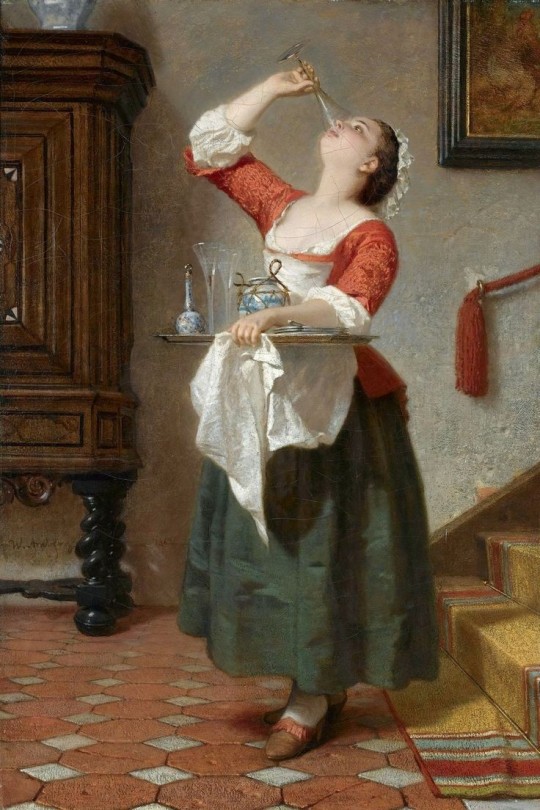
Wilhelm Amber • The Maid • 1862
The painting above shows a whimsical scene that if discovered by the employer may have resulted in a reprimand.
Except for the very rich, most households employed one servant – the "maid of all work". She was often a young girl who was taken in from the local workhouse. As the name implies, the role included all the chores of a household: cleaning, shopping, cooking, mending and washing. This grueling job paid very little due to the benefit of room and board. The maid often worked from early morning to late evening, with very little time off.
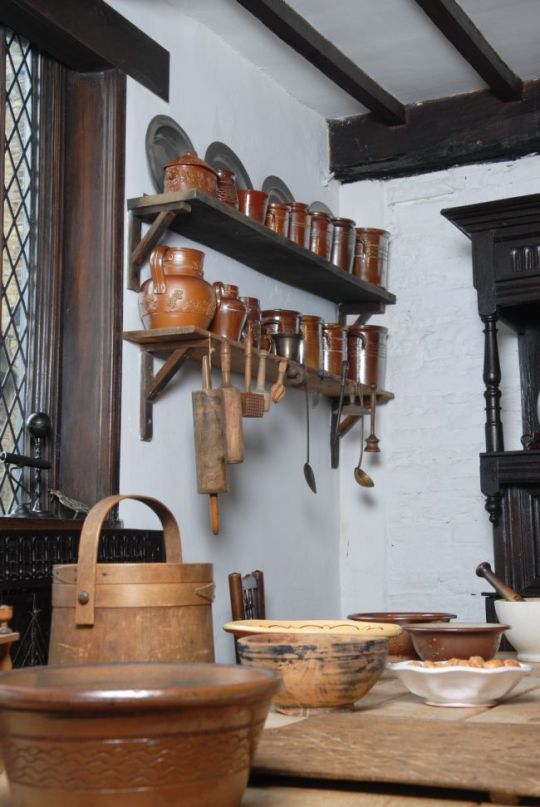
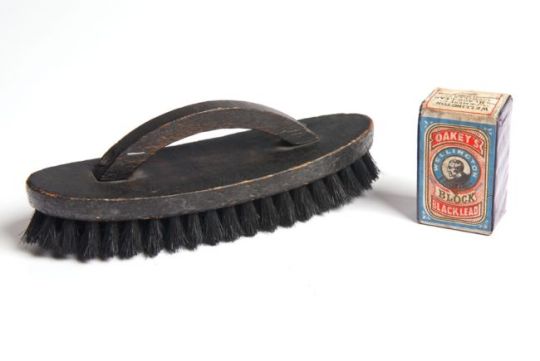
A simple black dress was often the uniform beneath the white apron. Notice in the photograph below that the two women are dressed identically.
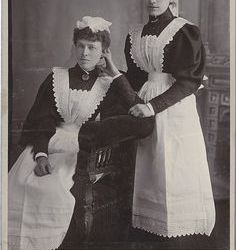
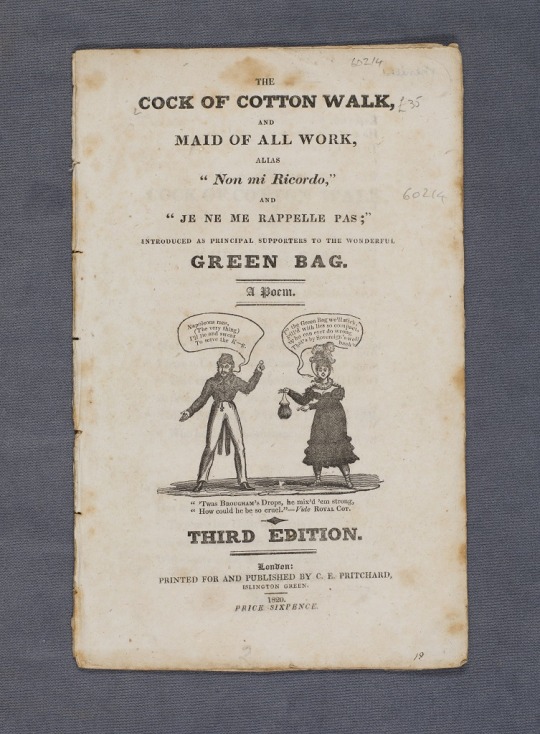
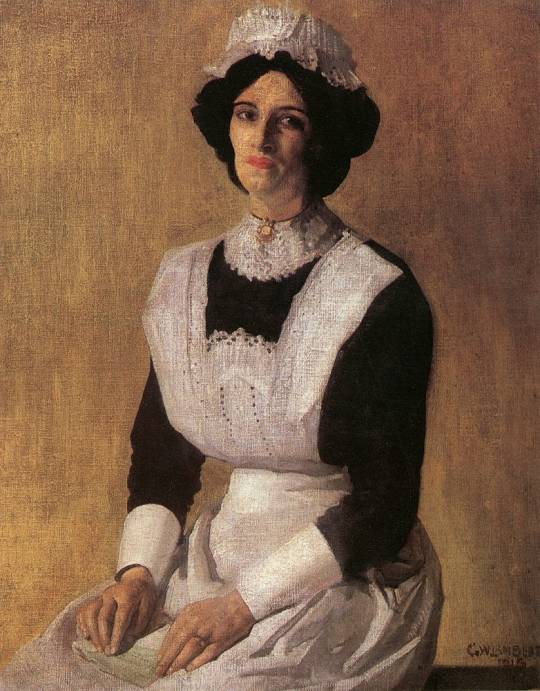
George Lambert (Australian, 1873-1930) • The Maid • 1915 • National Gallery of Australia, Parkes
References:
Jane Austen's World: Regency Servants – Maid of All Work
My Learning: The Family at Shibden
Elizabeth Bailey's blog
#art#portrait#painting#genre painting#george lambert#history of workers#servants in art history#history of clothing#the resplendent outfit blog#victorian era#regency era#19th century occupations#wilhelm amber#artwork
38 notes
·
View notes
Text
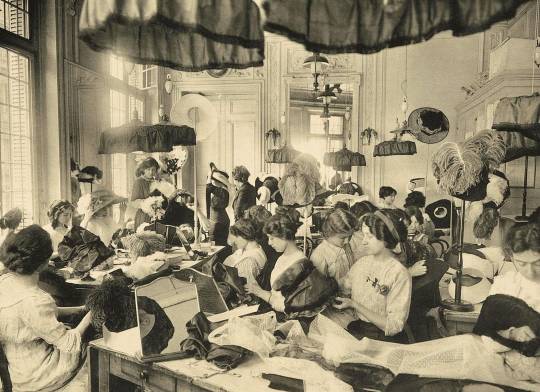
A group of milliners working in a hat shop. Ca. 1910
#reddit#fashionhistory#deleted user#hat#hats#hat shop#millinery#milliner#1910#1910s#edwardian#women#workers#working#01/15#national hat day#photography#unknown photographer#b&w#women's history#working women#women at work#fashion#clothing#vintage#antique#accessories#mad as a hatter
81 notes
·
View notes
Text




#Notes by Nikki#family#labor#join a union#unionization#solidarity#worker solidarity#Nikki History#long post#image heavy#facebook#This isn't my post#it's my brother's#and it feels right for my blog#labor stoppage#work stoppage#50#100#200#300#400#500#600#700#800#900#1000#2000
2K notes
·
View notes
Text

Carol Leigh / The Scarlot Harlot (deceased)
Gender: Female
Sexuality: Bisexual
DOB: 11 January 1951
RIP: 16 November 2022
Ethnicity: White - American
Occupation: Artist, writer, activist, sex worker, playwright, director, producer
Note: Is credited with coining the term sex work and founded the Sex Worker Film and Arts Festival and was the co-founder of BAYSWAN, the Bay Area Sex Worker Advocacy Network.
#Carol Leigh#The Scarlot Harlot#lgbt history#lgbt#lgbtq#bisexuality#bisexual women#female#bisexual#1951#rip#historical#white#artist#writer#activist#sex worker#playwright#director#producer#popular#popular post
119 notes
·
View notes
Note
Just a lovely fun fact about Garmadon in spinjitsu brothers,,

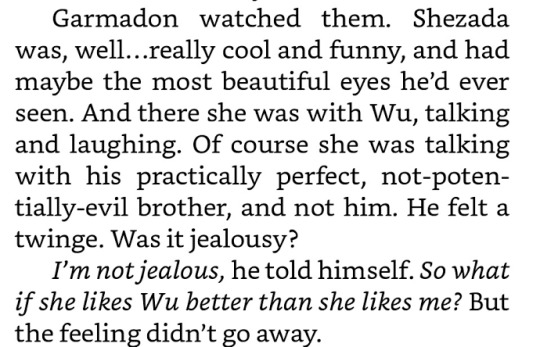

GARMADON IS THE JEALOUS TYPE!! JEALOUS HUSBAND CONFIRMED!! If Garmadon acted like this to a girl he had a crush on before, then he definitely had a jealous moment like this with Misako,, possibly with her and Wu,,
Uhh uh.. jealous oni dragon hybrid monster husband...man misako is so y/n coded
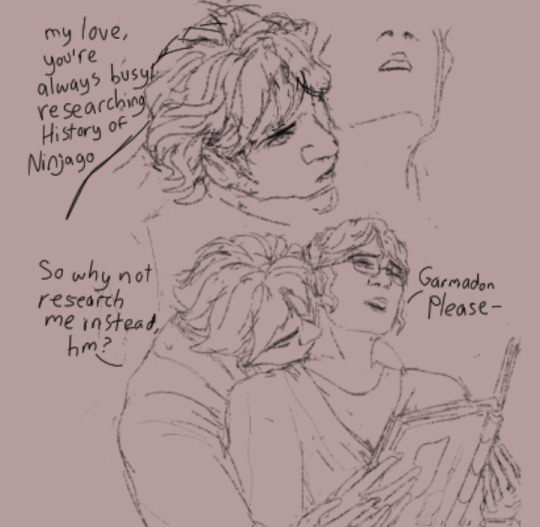
#misako getting late for work having to find excuses because she can't just say that she and and her husband were#do you think garmadon would be the overly sassy sarcastic husband when he's jealous about misako and her co workers#the first tag was supposed to he “she and her husband were yapping about ninjago history obvvv#ninjago#ninjago fandom#ninjago fanart#garsako#garmadon x misako#lord garmadon#garmasako#misako montgomery garmadon#fyp#digital art#misako ninjago#ninjago garmadon
96 notes
·
View notes
Text

look what I found while I was researching >:).
#tags with my oc's#I wasn't even looking for priest stuff it was under sex worker tag in getty hahahahaha#i said id try to chill out on the research#alas I am halfway through 'the dilly: a history of the piccadilly rent boy scene' and also watched johhny go home#and have many more media suggestions mentioned by this book#help#im gonna give him more hair at the sides...this is cute and lame
67 notes
·
View notes